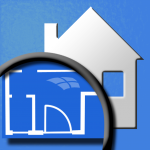Diving Into the Top New Technology Available in 2020
Technology is woven into almost every aspect of our daily lives.
It defines how we live, work, and enjoy our pastime. And we’re constantly pushing the boundaries of what is possible to achieve via gadgets and other marvels.
The frontier of innovation is a place where the top new technology comes to life. This technology acts as catalysts for changes that affect both current and future generations. Digital transformation and information mushrooming are well underway.
Unique synergies between various solutions are driving forces behind these developments. They have given birth to what we call the Fourth Industrial Revolution (Industry 4.0.).

We’re going to introduce its main harbingers, champions, poster children.
Big Data
The majority of the world’s population is connected to the internet and owns a smart device.
As a result, millions of bytes of data emerge every single day. In just the past few years, we’ve generated an unprecedented amount of it, currently standing at 30 zettabytes. In the years to come, the growth will remain exponential.
By 2025, we could hit a whopping 175 zettabytes.
This information boom is something marketers have to capitalize on. Leading brands of today, such as Netflix and Facebook, are certainly doing that. They’re going to great lengths to provide meaningful, on-demand experiences to consumers.
They essentially collect granular, historic, and real-time data to conduct marketing personalization and customization. Those that fail to adapt these trends run into the risk of falling behind and becoming irrelevant.
AI Algorithms
Cutting-edge algorithms are tireless workhorses that crunch tremendous amounts of big data.
Artificial intelligence (AI) and machine learning (ML) technologies form the cores of these systems. They allow algorithms to grasp the context of online interaction and better understand humans. Advanced analytics take over in later stages to produce actionable insights and predictions.
Brands can employ these tools to tailor user experiences, interfaces, and products to incredibly specific needs. You’ve probably been surprised a few times by highly accurate product recommendations and perfectly-timed ads.
Well, it’s just one illustration of what AI can do for us.
Services like Amazon Go let us shop without doing the manual checkout. We can pull it off thanks to the application of IoT and machine vision technologies. There are many other tools like calculators that make our lives way easier.
They can solve complex scientific formulas in no-time for us— check it out!
Extended Reality
Extended Reality is an umbrella term for a set of technologies that take user immersion to the next level.
Virtual Reality (VR) is the first game-changer to highlight. This simulated experience sucks people into virtual environments, making the surroundings completely disappear. You can already choose between various commercial headsets that serve as VR gateways.
Secondly, we have Augmented Reality (AR), which inserts digital objects into our physical reality. It’s one of the technologies spearheading the evolution of the marketing and media landscape. The Pokémon Go phenomenon was just the beginning of the immersive revolution.
Apart from VR and AR, we should also mention mixed reality. It’s another solution blurring the lines between our physical realm and digital interfaces. It shows digital and physical objects can “coexist” in the same space.
All in all, extended reality solutions will help us bring the people, digital products, and technology together in a seamless way.
Internet of Things (IoT)
IoT represents a rapidly growing matrix of internet-connected devices.
These devices are smart, data-hungry, and equipped with sophisticated sensors. And they come in all shapes and sizes, from vehicles and cell phones to home appliances. The state of global interconnectedness is nigh will involve smart homes, factories, and whole cities.
For now, though, virtual assistants such as Amazon Alexa are at the forefront of the trend.
They streamline house chores, read weather forecasts, play favorite songs, and do other amazing things. They also upload data to the cloud and make it available for processing and analysis.
As for business owners, they are able to leverage IoT for things like remote monitoring and inventory management. These processes boost operational efficiency and security. On top of that, one may save energy costs via smart lighting and temperature control systems.
Pretty useful in times of uncertainty and frugality, isn’t it?
5G Networking
The stage is set for the next, fifth generation of mobile networking.
We’re talking about 5G, which is poised to change how we interact with machines and interconnect devices. The competition between the China and US is reaching fever-pitch, which just goes to show how crucial this infrastructural overhaul is.
5G will depend on densely-packed towers that will be able to support billions of devices. Through higher bandwidth, lower latency, and other upgrades, they will make the network more efficient and reliable.
5G will also tap into the power of cloud computing and supercharge global digital transformation. This is to say it will accelerate the proliferation of IoT devices, driverless cars, and other tech novelties.
Consumers will certainly rejoice in the opportunity to stream top-quality video, images, and audio content.
Modern Robotics
Robots are no longer confined to movie screens and futuristic prophecies.
They’ve taken over, coming a long way from the first transistors and integrated circuits. Nowadays, they’re proving indispensable in various controlled environments.
Industrial robots, for instance, assist human workers in manufacturing, warehousing, delivery, and shipping. They solve various logistics difficulties by taking on physically taxing, repetitive tasks.
Leaps and bound the technology is making will usher in a new era of robotics. We will see more robots roaming around the “open world”. They will also see adoption in almost every business sector, not just their birthplace, the specialized industries.
Finally, robots are dispatched where humans can’t yet venture. They are pioneers of space exploration scouring surfaces of distant planets for signs of life.
Blockchain
The future of individual cryptocurrencies can seem very murky.
The entire market is prone to volatility and investments linked to high risk. Yet, the technology underpinning it, the blockchain, is here to stay. This decentralized, peer-to-peer network supports most virtual coins of today.
Through a distributed ledger database system, it promotes trust and ensures the utmost level of security and transparency. Transactions are verified via a system of nodes that can’t be tampered with. There are no intermediaries and central authorities setting and enforcing rules.
That said, major countries and institutions will not sit idle. They will roll in blockchain-based systems in an attempt to combat data security issues and internet fraud. There’s no doubt blockchain will see many more practical uses before you know it.
Predictions are it will power insurance, trade finance, banking, lending, and other financial processes. In fact, it might be the future of money as we know it.
Quantum Computing
2020 could be the dawn of the quantum computing era.
Instead of standard bits, quantum computers use qubits, which exist in a state called superposition. This basic setup reflects our understanding of how the universe works. Not only that, but it gives quantum devices the ability to operate at speeds unimaginable until recently.
In theory, quantum technology should not just speed up computing but open doors to a whole new uncharted world of possibilities.
Giants like Google, Microsoft, Intel, and IBM are rushing to develop a fully-functional quantum computer. Their endeavors are shadowed by innovative startups aiming to disrupt the new market.
And some milestones have been reached already, such as Google’s quantum supremacy breakthrough. This was a very specific and tightly controlled experiment, but it offers a glimpse of what is to come.
The commercialization of quantum computing will be the next stage on the journey. Provided some major practical obstacles are dealt with, usage on a mass scale is imminent.
3D Printing
3D printing has been around for some time.
Still, we’ve only scratched the surface so far. The implications of this technology are far-reaching and diverse.
In the medical field, 3D printing can produce medications, surgical equipment, and advanced prosthetics. Yes, bionic body parts will be a reality sooner than most people suspect.
Moving, on manufacturing industry players will be able to assemble products locally. Only a handful of employees can oversee the process of printing, even in the case of items like vehicles.
One Chinese company even launched a project for printing a whole house from recycled materials. This method is much faster, cheaper, and eco-friendlier than conventional construction.
Lastly, many creative types, artists, and inventors will be tempted to embrace 3D printing. After all, this technology can help them materialize their visions with unmatched precision. Not even the sky is the limit.
The Great Convergence of Top New Technology
Technology is constantly advancing, getting ever cheaper and more accessible.
Businesses rely on it for everyday operations and to understand consumers better. Their products and services foster an ecosystem of experiences and data points around them. IoT devices and AI algorithms feed on them to produce even more impressive solutions.
Indeed, a slew of new mainstream applications are coming and they will soon enter mass consumer use. Smart homes, intelligent robots, and lightning-fast computers are among them.
Ultimately, the confluence of top new technology solutions will act as a force reshaping our society and the business world. So, it’s not any single technology will give rise to a truly connected world.
It turns out that idea cross-pollination and tech convergence are the most potent tools we have in our arsenal.
Browse our library by category to discover more exciting topics and stories. Stay in-the-know and ahead of the curve!
















